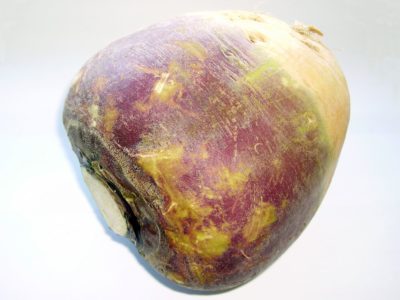Rutabaga are a starchy root vegetable that originated as a cross between the turnip and cabbage (though interestingly, this cross seems to have happened naturally in the wild! Specifically, in Sweden in the 1600s). When I refer to rutabaga in a recipe, I am generally talking about the the purple-coated, round white fleshy root vegetable, but the greens are also edible (so don’t neglect them if you happen to buy the whole plant!). Rutabaga can be eaten raw or cooked, but it needs to be peeled (especially if the skin has been waxed). I like to include rutabaga as a substitute for traditional white potatoes, which are not included in AIP, so some of the recipes I’ve created that include rutabagas are my Paleo French Fries, AIP Notato Salad, and Scalloped No-Tatoes.
Nutritionally, rutabaga is the “standard” profile for a root vegetable: it is almost entirely carbohydrates (including fiber) and water, with almost no protein and fat. Rutabagas are a good source of vitamin C, with smaller or trace amounts of many other vitamins and minerals.
Rutabagas, like other members of the cabbage family, are cool weather crops, so they’re more likely to be in season during the fall. You can pick them up at your local farmers’ market if you live in a temperate climate, or you might be able to catch them at the grocery store during the fall and winter!


 Daikon Radish
Daikon Radish